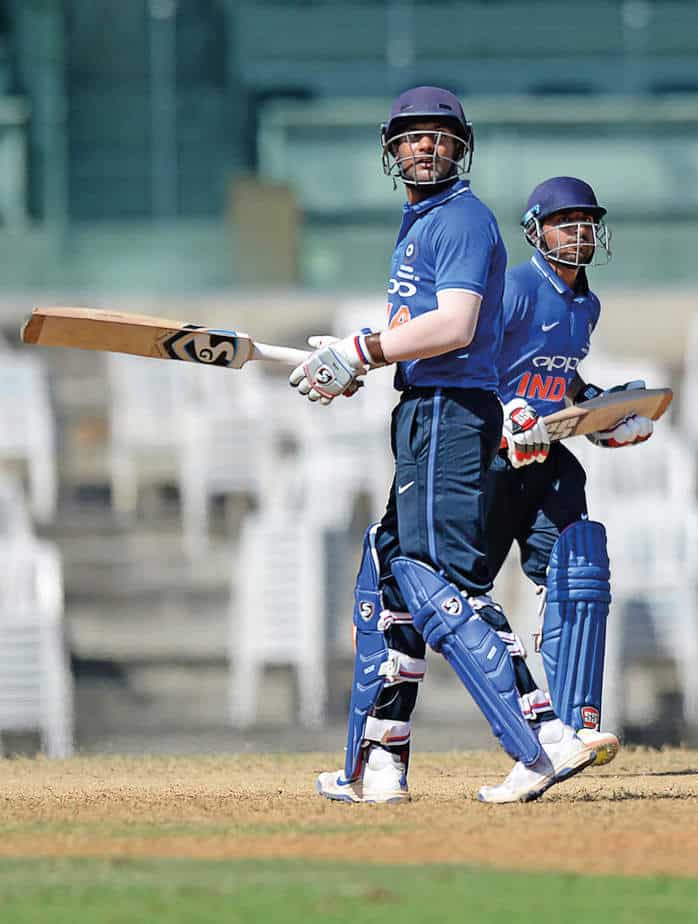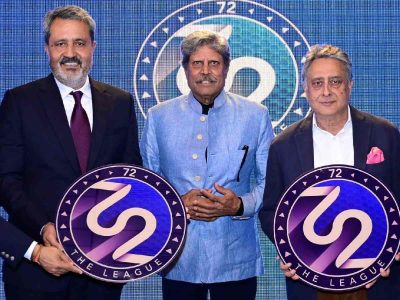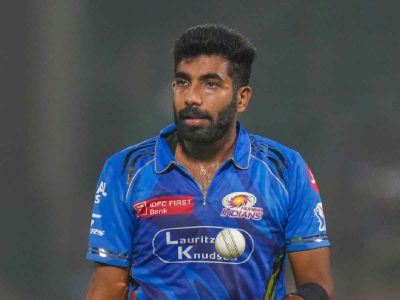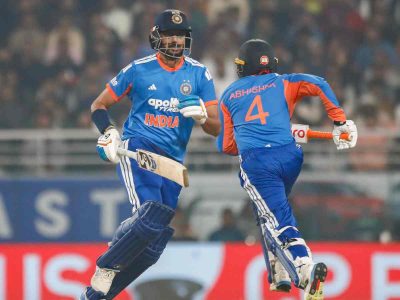Selectors are making a grave mistake when they pick talent from the same pool of players, whether it is Test, ODI or T20
Mayank Agarwal has scored more than 2,200-plus runs in an Indian domestic season, the highest by anyone in a single season.
While the right-handed batsman was busy breaking records and helping his team win the Vijay Hazare Trophy in Delhi, the three wise men of Indian cricket (read senior selection panel) were looking at 15-year-old records to select a team for the future. Unfortunately, Mayank was still in his school then and was playing cricket for fun.
So, MSK Prasad, Sarandeep Singh and Debang Gandhi obviously picked veterans Suresh Raina and Dinesh Karthik to do this job.
Mayank, though, busy breaking records in the domestic circuit with grace and perfection, was awaiting a call from national selectors. The call came but not from any of the three wise men. It was from one of his well-wishers. All he could hear was “Hard luck”.
Mayank was not the lone sufferer in this case. At a time when senior pros like Virat Kohli, Bhuvneshwar Kumar and MS Dhoni were asked to rest as they had been playing too much cricket in the last few months, selectors also conveniently ignored Ajinkya Rahane, who was instrumental in changing India’s fortune in the recent South African tour with his decisive match-winning knock in the third Test, with ease to make their favourite Rohit Sharma feel secure as a leader.
There are a few new names like Deepak Hooda, Washington Sundar, Vijay Shankar, Shardul Thakur, Mohammed Siraj and Rishabh Pant in the team to cover up their wrong selection but there was no doubt in anyone’s mind that selectors took two steps back to take the Indian cricket one step forward.
Mayank has not just been consistent but ruthlessly brilliant throughout the ongoing season. Now all he has left to do is to think hard… “What else do I need to do to impress this bunch of jokers (as once called by Mohinder Amarnath after he was dropped controversially in 80s)?”
Mayank’s desperation is justified because he has already peaked at 27, the prime time for any batsmen around the world. Having missed this opportunity to be part of Team India for the Nidahas Trophy, a tri-nation T20 series in Sri Lanka, this Karnataka opener could judge that there may not be any early chance left for him once the star players return for overseas tours of England and Australia.
Mayank certainly has no choice but to carry on doing what he is best at. “As a player, I don’t differentiate between this tournament or that. We as players need to go out and perform every single day. It’s better to focus on things that are in your hands. Selection is something that is not in our control,” was how this 27-year-old batsman turned philosophical after the news reached him in Delhi last week.
What next?
What surprises everyone in Indian cricket is that BCCI’s selection panel has been virtually picking the same pool of players, whether it’s a Test or an One-dayer or the T20 format, in the name of building teams for the future.
Yet Test cricket and T20 are as different in nature as “day and night”. Though the equipment essentially used in both formats is virtually the same but then there is a gulf between the style of play, process and even uniforms. T20 was only conceived for entertaining masses, even though they don’t understand cricket, apart from making huge profits but Test cricket has no such illusions.
Only the cricket purists can watch and appreciate the nuances involved and needed for this 120-year-old game. Even though ODIs and T20s are put in same bracket of limited-overs cricket, but there is hardly any similarity between the two.
The approach, mindset and time needed to settle inside prompts many to view T20 format as a different game altogether.
Team India is surprisingly the only one in world cricket right now which sticks to virtually the same pool of players when picking teams for the T20. In comparison, teams like Australia or England have long back decided to have different players and different captains for these inconsequential matches.
The example of West Indies is also interesting in world cricket. Though, their Test team is now only a shadow of their past but their success in 2016 World T20 left no doubt in any mind that the time has come to identify players, especially all-rounders, who can turn the game around in an over.
That’s why it’s time to wake up and learn from other teams who have already taken a step forward in terms of identifying specialists for this format. India, so far, have refused to budge from the tried and tested pool of players.





